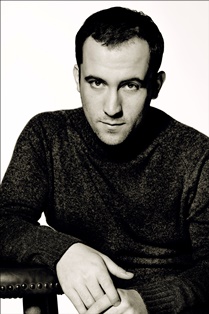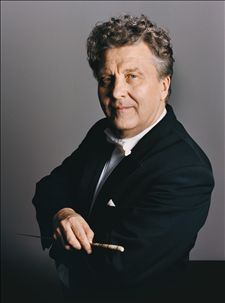
Sinaisky, Levit, CSO Combine for Evocative Concert


An accomplished master and a youngster on his way to the top made their debuts with the Cincinnati Symphony Orchestra Friday morning at Music Hall.
The master was conductor Vassily Sinaisky, who led the CSO with an assured and inspiring hand in works by Edward Elgar, Ralph Vaughan Williams and Beethoven. The youngster -- only 27 -- was pianist Igor Levit in a precise and exquisitely nuanced performance of Beethoven’s Piano Concerto No. 4 in G Major.
Born in Russia and trained in Germany, Levit compelled listening, even in the softest moments and indeed, he took the piano down to a whisper at numerous times during his performance. There was bravura, too, and it all added up to the finest Beethoven Four in this listener’s memory. After a gentle introduction, the first movement sparkled in Levit’s hands, while giving way to soulful and tender moments, too. The Andante offered a moment of sober reflection, enhanced by the serious tone of Sinaisky and the CSO. Levit tripped the light fantastic in the Rondo finale, which also featured beautiful interaction between the soloist and principal cellist Ilya Finkelshteyn (who can make an open string the most eloquent sound you have ever heard). Responding to an enthusiastic ovation, Levit encored with a similarly compelling performance of the Chorale Prelude, “Nun komm der Heiden Heiland” by Johann Sebastian Bach.
Sinaisky opened the concert with Elgar’s “Cockaigne” concert overture, a hugely colorful work for full orchestra evoking the city of London. Scored for large orchestra, including organ, the music was at times sprightly and genial and at times rollicking with good humor, all held together with smooth transitions by Sinaisky.
Sinaisky went to the opposite end of the spectrum with Vaughan Williams’ Symphony No. 6 in E Minor, heard in its CSO premiere. The Symphony was penned just after World War II, and has been linked to it by critics and commentators. The composer denied any connection, but its shape and pacing, particularly its pianissimo finale, advocate the opposite.
There are no pauses between its four movements, which follow a fast-slow-fast-slow pattern. It opened with an Allegro cri de coeur, becoming march like and rousing, with a lovely contrasting theme colored by two harps. A repeated rhythmic motif created a mood of seriousness in the Moderato second movement, which was capped by a plaintive English horn solo by Christopher Philpotts. The Scherzo was marked by fugal textures, a tenor saxophone solo, played by James Bunte, and solos by principal oboist Dwight Parry and bass clarinetist Ronald Aufmann, all evocative and full of color.
The finale was spellbinding, opening with a string quartet, then unfolding with quiet throughout. Sinaisky and the CSO performed it all with the utmost feeling and atmosphere.
The concert repeats at 8 p.m. Saturday at Music Hall. Tickets begin at $12, available at (513) 381-3300 and online at www.cincinnatisymphony.org